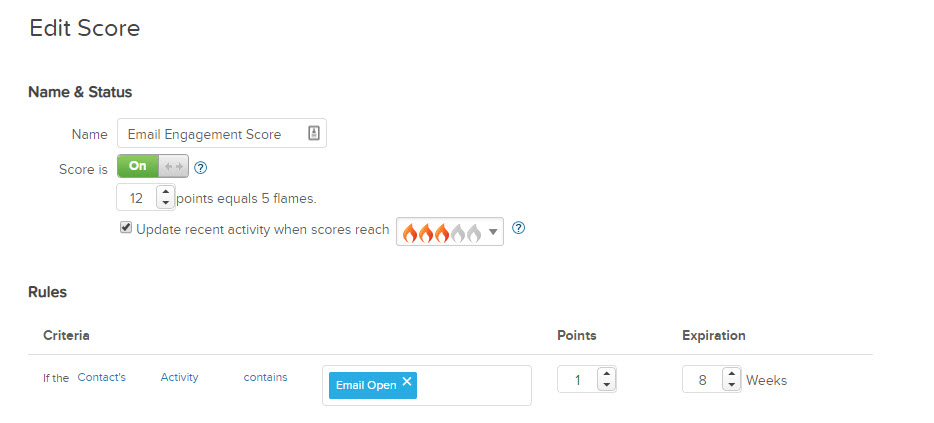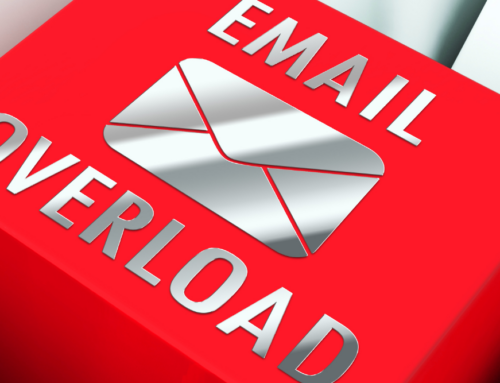This week I’ve spent several days working over our marketing metrics here at Nonprofit Marketing Guide, especially related to email engagement.
Our CRM tells us who is engaged and who isn’t according to a basic test: If they have opened or clicked any email or filled out a web form in the past 90 days, they are considered “Engaged.” After 90 days, but before 12 months, they are considered “Unengaged Marketable.” After 12 months of no opens, clicks, or forms, they are moved to “Unengaged Non-Marketable” and opted out of our mailing list. I set the 90-day and 12-month timeframes, and the CRM does the rest.
For many nonprofits, just getting this level of information is a big step forward. It’s one of the first steps in maintaining a healthy email and sender reputation. (I’ll teach you all about this during our upcoming webinars.)
But to really connect your email engagement to your bigger organizational goals, you need a lot more information. For example, you really want to know how many people open most of your emails and how many opened just one or two in the last 90 days. They are all lumped under the “Engaged” label even though the variation in their level of engagement is huge.
This week, I analyzed our mailing list in two new ways that gave us information we can actually use to work toward our goals. I won’t get into the detailed steps of how I did it, because that’s very specific to our CRM (which is Infusionsoft, which is fine for businesses, but I do not recommend it for nonprofits). But with a little creativity, you should be able to apply these basic ideas to any CRM.
Using Lead Scoring to Determine Opening Frequency
The first thing I did was reconfigure the lead scoring in our CRM, which gives people a score of from 0 to 5 flames (so 6 levels total). Previously, I had a mishmash of opens, clicks, and tags to come up with a score.
This week, I changed it to just email opens, with one point for every email opened. While it depends on the segment, on average, people on our list get about 8-12 emails per month. If they opened half of those (which would be a personal open rate of 50% — very high), that would be six opens. I decided to track over two months, and expire points after 2 months, so that means if someone opens 12 emails in a two-month period, they hit the top ranking, 5 flames. The CRM does that math down to zero flames from there.

So, now I can tell not only if they are engaged, but just how engaged they are based on how many emails they are opening.
Here is how the two-month engagement for people on our main mailing list breaks out as of today:
- 5 Flames – 19%
- 4 Flames – 6%
- 3 Flames – 7%
- 2 Flames – 12%
- 1 Flames – 21%
- 0 Flames – 35%
Now that’s some meaningful engagement data! We can see who is regularly opening and who is losing interest. And now that we are measuring it, we can put new engagement campaigns in place to try to bump people who are currently at 0 or 1 flame up higher.
Of course, this isn’t perfect (nothing is in this kind of work). For example, brand new people to our list who’ve only been sent a few emails haven’t had enough opportunities to open for their scores to go up beyond zero flames. So we’ll need to be careful when building segments when we ask if people still want to stay on the list. You don’t want to send the same email to someone who has been on the list for months but has zero flames and someone else at zero who just signed up last week!
Merging Email Engagement with Other Actions to Meet Your Goals
Why do marketers want an engaged list in the first place? Because it helps you meet other goals.
For nonprofits, that could be participating in your programs, donating to your cause, volunteering, advocating on your issues or any other call to action important to your mission.
For us at Nonprofit Marketing Guide, our email engagement is important to reaching two goals:
- Nonprofit communications staff trusting us and caring about what we have to say (or in wonk language, thought leadership)
- Nonprofit communications staff relying on us to help with their professional development (using our programs and services, both free and paid)
So with these goals in mind, I decided to combine lead scores 1 – 5 (again, people who have engaged in the last two months enough to get at least 1 flame) and some other actions they have taken on our website.
Another way to think about our goals is to describe the kind of relationship someone on our mailing list has with us at Nonprofit Marketing Guide. So I created three new relationship statuses for people:
- Interested: Email engaged in the last two months, but not using much on our website, perhaps a few downloads every now and then
- Casual Learner: Email engaged in the last two months and has taken our Communications Effectiveness Quiz and has a free membership, which gives them access to more downloads and some free e-courses.
- Invested Learner: Email engaged in the last two months and has paid for training at any point in the past (e.g. registered at any point for a la carte webinars, the All-Access Pass, or the Mentoring Program).
Of course, you’d come up with relationships that are more meaningful to you given your goals.
Now when I run these searches in our CRM, combining email engagement with other actions, I can see that within these three categories,
- 22% are Invested Learners
- 21% are Casual Learners
- 57% are Interested
Once again, now we can develop campaigns to move the Interested to one of the Learner categories and to move people with zero flames up into any of these three categories.
And if we can’t get them engaged on email? What then? We’ll stop emailing.
What’s Next?
To take this even further, I plan to break out the two Learner categories in more detail based on website activity in our membership areas. I haven’t set that up yet, but I know our software can do it. I just need a few more hours of time to work on it.
I hope this behind-the-scenes look at our work has given you some great concepts to apply in your own work. Give yourself some time to think through your goals, figure out what your database is capable of, and create some reports that really help you make a difference!






